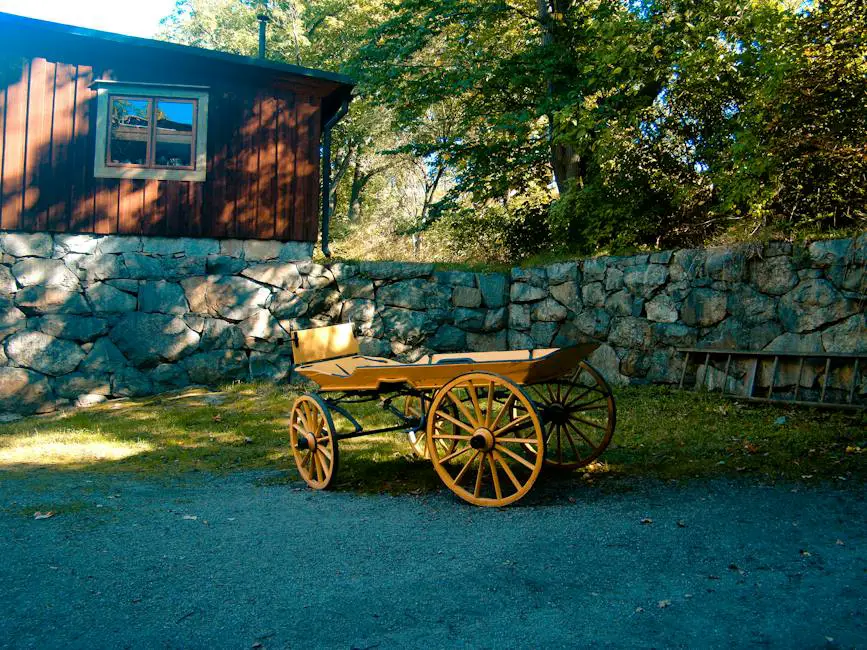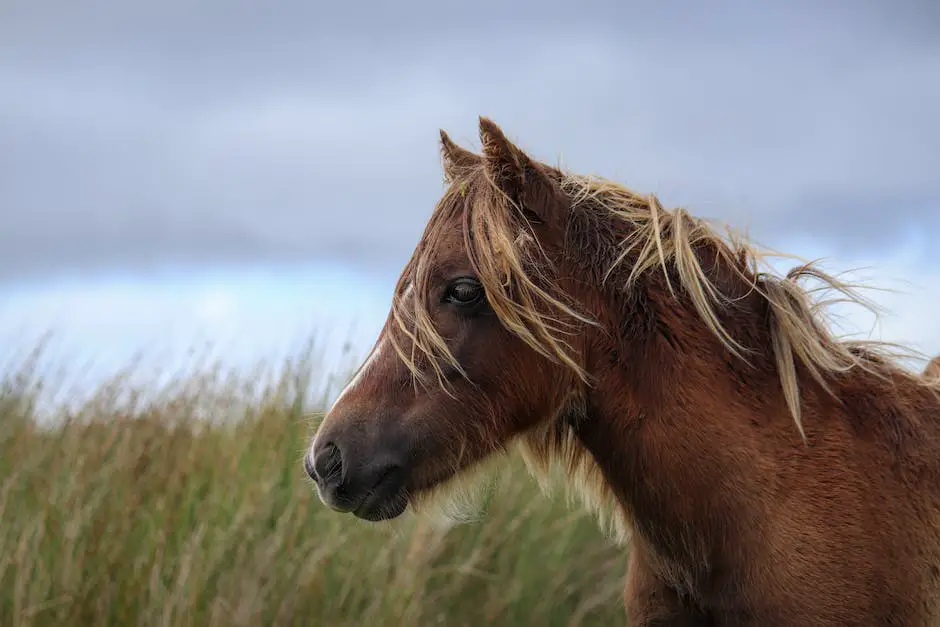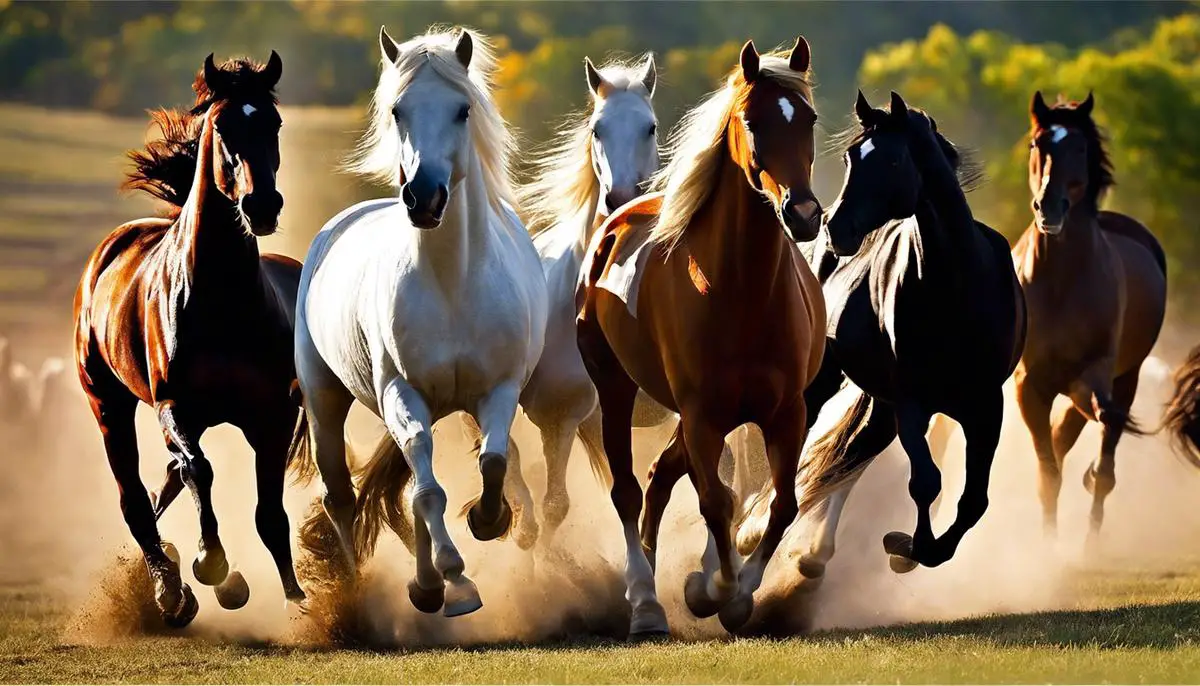The understanding of horse breeds is often a nuanced study of lineage, traits, and temperament. Among the vast equine family, ‘cold blooded’ breeds hold a significant place, characterized by their calm demeanor, sturdy physiques, and impressive strength. This essay unravels the specifics of what constitutes a cold blooded horse and discerns the stark contrasts between them and their hot blooded and warm blooded kin. It’s not just the layered history that sets these gentle giants apart, but also their remarkable impact on the tapestry of human civilization, from ploughing acres of farmland to galloping through battlefields of yore.
Table of Contents (Horspedia)
Defining ‘Cold Blooded’ Horse Breeds
The Fascinating World of Cold-Blooded Horses: Gentle Giants of the Equine Family
Are you new to the equine world, or maybe you’re a seasoned horse lover looking to broaden your horsey horizons? Well, saddle up and get ready to delve into the intriguing world of cold-blooded horses. These large and loveable creatures are completely different from the hot-blooded thoroughbreds you might see racing around a track or the sprightly, spirited warmbloods often found on the show jumping circuit.
Cold-blooded horses are sort of like the gentle giants of the horse family. Their name might sound like they’d be shivering in the pasture, but ‘cold-blooded’ in this context doesn’t really have anything to do with their body temperature. It’s all about how they’re built and what they’re bred for. Let’s trot through a bit of what makes these horses truly special.
Picture a horse that’s hefty, strong, and generally as chill as a lazy Sunday afternoon. That’s what cold-bloods are all about. They are the draft horses – big, powerful animals that were originally bred for heavy farm and industrial work. Think about the beautiful Belgian or the sturdy Clydesdale; these guys aren’t built for speed, but they have the brawn to do jobs that would make other horses break a sweat just thinking about it.
One of the most recognizable traits of cold-blooded horses is their size. We’re talking heftier than your average horse, with a large, muscular build that screams ‘powerhouse’. Muscles aren’t their only bragging right—cold-bloods boast a calm and even-tempered nature, making them a favorite among horse enthusiasts who prefer a more laid-back companion.
Cold-bloods are also known for their big, kind hearts. This temperament makes them fantastic for beginner horse owners or handlers. Their docile nature means they’re less likely to spook or dash off leaving you in the dust. Instead, they are known for their patience and willingness to work with their human pals.
One mustn’t forget their hooves—large and in charge, these hooves support their massive weight. And atop those hooves, you’ll often find feathering—the long, flowing hair that just adds to their majestic appearance.
It’s the combination of their physical strength and gentle demeanor that has allowed these horses to transition from workhorses plowing fields and pulling carts, to show horses turning heads in parades, competitions, and even therapeutic riding programs.
Taking care of a cold-blooded horse is a commitment, though. They need a lot of food to maintain their bulk and energy, and because of their size, health issues like joint stress can come up if they’re not given proper care and attention. Nevertheless, for those who are up to the task, the rewards of caring for such a magnificent creature are many.
So, now when someone talks about cold-blooded horses, you’ll know they’re not discussing horses wearing little equine sweaters to keep warm. They’re talking about the behemoths of the horse world, the ones who take their own sweet time, and have an abundance of love and loyalty to give. The cold-bloods are, without a doubt, the gentle giants you can’t help but admire.

Historical Roles of Cold Blooded Horses
Cold-blooded horses have a remarkable tale woven through the fabric of human history. Since ancient times, these sturdy equines have played crucial roles in the development of civilizations. With their prodigious strength and unwavering demeanor, they were the ideal candidates for tasks that required both power and persistence.
Originating from the need for heavy labor, these horses were integral to agriculture. They plowed fields, hauled carts filled with crops, and transported produce to marketplaces. Before the age of machines, their immense torque was unmatched, and they were trusted partners in turning the rugged earth and sowing the seeds of future harvests.
As societies evolved, so did the use of these muscular titans. In medieval times, their capacity to carry weight made them indispensable in warfare. They carried knights clad in heavy armor, steadfast under the duress of battle. Their formidable presence on the battlefield was not just utilitarian but also had a psychological impact. The sight of a line of heavily armored horses charging could sway the momentum of an engagement.
Through the years, as the Industrial Revolution matured, the role of cold-blooded horses shifted. Railways and mechanical machinery took over much of their traditional work. However, these horses found new purpose in the emerging industries, such as forestry. Their ability to navigate through dense woods with loads of timber proved invaluable. Even today, in environmentally sensitive zones, they perform forestry duties to help maintain the balance of ecosystems.
Another major transformation for cold-blooded horses has been their entrance into the realm of leisure and sports. They are now commonly seen in competitive draft horse showing, harness racing, and recreational riding. Their calm disposition makes them a favorite among novice riders and those seeking equine-assisted therapy.
These equines have also found their place in cultural festivities. Festivals and parades often feature them, adorned with decorations, pulling historical carriages or floats as they parade through crowded streets, sharing their majestic aura with onlookers.
The connection between cold-blooded horses and humans is deep-rooted. It’s a bond forged through shared history and mutual reliance. This enduring partnership demonstrates the versatility and adaptability of these gentle giants as they’ve been reimagined from indomitable workers to cherished companions and athletes. Cold-blooded horses are not just a relic of the past; they continue to write their story alongside ours, proving time and again that they are far more than just a testament to what was—they are a testament to what can be.

Notable Cold Blooded Breeds
Famous Cold-Blooded Horse Breeds: Giants of the Equestrian World
When we dive into the equestrian fold and take a closer look at the big-hearted beasts of the horse world, certain cold-blooded breeds stand out. These magnificent creatures have not only shaped history but continue to captivate horse lovers everywhere with their might and majestic demeanor. Let’s saddle up and explore some of the cold-blooded champions who have trotted into the spotlight.
Belgian Draft Horse: Known affectionately as the Belgian, this breed boasts a distinct chestnut coat with a flaxen mane and tail, making it a head-turner at any show. Belgians are beloved for their strength, which historically made them the perfect candidates for farm work and pulling heavy loads. Today, they’re a favorite for draft horse competitions, thanks to their impressive presence and horsepower.
Shire Horse: Hailing from England, the Shire is often recognized as the tallest of the draft breeds, with some individuals standing over 17 hands high. Their trademark feature is their extensive feathering over their hooves, a nod to their heritage. Shires were once armor-laden warhorses before transforming into the go-to breed for pulling carts and plows. Now, they double as gentle companions and competitive steeds in pulling contests.
Clydesdale: Instantly memorable with their white, feathery feet and flashy movement, Clydesdales are the poster horses for parades and promotions, as seen with the famous Budweiser team. Originating in Scotland, Clydesdales were used for heavy farm and industrial work but have now found their niche in ceremonial roles and are celebrated figures in the show ring, owing to their elegant gait and striking appearance.
Percheron: With roots in France, Percherons are versatile powerhouses with a typically gray or black coat, presenting a more streamlined appearance than some of their draft cousins. Historically used for war, agriculture, and even as stagecoach horses, Percherons are renowned for their adaptability. They can be found doing everything from farming to competitive driving and even under-saddle events for those who appreciate a steadier mount.
Suffolk Punch: The Suffolk Punch, England’s contribution to cold-blooded breeds, is best known for its chestnut color and compact, powerful body. As the breed name suggests, these horses pack a punch in terms of strength yet maintain a calm, personable nature. Though they were essential in British agriculture, current equestrian enthusiasts enlist the Suffolk Punch for everything from therapeutic riding programs to heritage farming, preserving their unique place in horse culture.
Norwegian Fjord: The Norwegian Fjord might be smaller than its giant kin, but it is no less striking with its dun color and distinctive dorsal stripe. These horses are not just a pretty face; they trace their lineage back to Viking times and have proved themselves as farm and mountain work horses over centuries. Their friendly disposition makes them excellent for recreational riding, driving, and even in therapeutic settings.
Each of these storied breeds brings something special to the stable. They are all united by their past as diligent laborers, yet they continue to adapt and thrive in modern roles, from ceremonial to sporting and companionship. As draft horse enthusiasts and those with a penchant for the grandeur of cold-blooded breeds, there’s an unspoken bond with these horses. Their gentle, giant status not only cuts an imposing figure on the horizon but also carves a permanent and beloved space in the hearts of those who work alongside them. The narrative of the cold-blooded horse is far from over as they continue to show their valor and versatility in an ever-changing world.

Conservation and Preservation Efforts
Preserving Cold-Blooded Horse Breeds: A Commitment to Heritage and Diversity
When discussing majestic cold-blooded horse breeds, there’s a magnetism that gallops beyond their physical charm. Horse lovers know that these breeds carry a wealth of history and cultural significance. As splendid as their past may be, the challenge lies in preserving these equine treasures for future generations.
Thankfully, initiatives for safeguarding the legacy of these gentle giants are ongoing and stronger than ever. Breed associations across the globe are at the forefront, championing the cause. They enforce stringent breeding standards to ensure the genetic health and purity of cold-blooded lines. What’s more, by tracking pedigrees, they maintain the rich lineage that has been established over centuries.
Conservation efforts extend to specialized programs focusing on breeding for diversity. This strategy prevents the narrowing of gene pools, which can be detrimental to a breed’s robustness and long-term survival. By broadening the genetic base, organizations hope to sustain the breed’s signature qualities while bolstering overall health.
Education plays a pivotal role as well. Raising awareness about these horses kindles interest and encourages new enthusiasts to join the community. Workshops, clinics, and seminars educate owners and potential breeders on the best practices for caring for and nurturing these horses to retain their breed-specific traits.
Moreover, recognition of the ethnic and historical importance of these breeds spurs preservation. This includes nurturing the traditions and events where these horses shine. From pulling contests to ceremonial carriage rides, these activities honor the breeds’ past roles and keep them socially relevant.
Sanctuaries and rescue organizations also step in where needed, offering safe havens for horses that may be at risk. These facilities promote adoption and provide lifelong care, helping ensure individual horses have a place to thrive and continue to fascinate horse lovers.
Challenges indeed persist, with changes in agriculture and industry reducing the historical roles of these breeds. Despite this, the reverence for cold-blooded horses as companions and competitive partners in various equestrian disciplines grows steadily. The versatility these horses showcase in modern contexts – from dressage to recreational riding – contributes immensely to their ongoing story.
Lastly, technological advancements such as DNA research and fertility techniques are becoming invaluable tools. Fertility science can help manage breeding programs more effectively, particularly for those breeds teetering on the edge of extinction.
In conclusion, the preservation of cold-blooded horse breeds is a multifaceted quest that melds tradition with innovation. It’s a testament to the enduring appeal and significance of these awe-inspiring horses. Through concerted global efforts and a shared passion for equine heritage, the heritage and majesty of cold-blooded horse breeds gallop steadily toward a secure future.

Cold Blooded Horses in Popular Culture
When discussing cold-blooded horses, one cannot overlook the significant strides taken toward the preservation and appreciation of these magnificent breeds. These horses, once the backbone of agrarian societies and symbols of medieval chivalry, now find their status shifting in a world that has largely moved away from traditional uses for their strength and endurance.
In the crusade to protect these breeds, a network of breed associations plays an invaluable role. Their mission transcends mere enthusiasm for these horses; they commit to a future where the robust genetic legacy of cold-blooded horses continues to thrive. By rigorously recording bloodlines and benchmarks for genetic health, these associations aid in maintaining genetic diversity. This attention safeguards against the inbreeding that can occur when populations dwindle and breeders have limited options.
It’s not just about strong traits or pure bloodlines, though. Awareness and education hold the key to the future. More and more, people are discovering the multifaceted nature of these gentle giants beyond their historical roles. Spreading the word about their gentle nature and teaching proper husbandry ensures that these breeds are more than mere vestiges of the past.
Sanctuaries and rescue organizations also rise to prominence in this narrative. As shifts in agriculture and industry leave some cold-blooded horses without roles, these havens offer respite. They not only provide shelter but also muscle these breeds back into the limelight, showcasing their changed roles in modern society.
Despite the challenges posed by evolving economies and changing times, cold-blooded horses continue to enchant a growing community of aficionados. They capture hearts in leisure riding, therapeutic settings, and even in competitive arenas where they showcase that, even stripped of their historical context, they’re far from obsolete.
Lastly, technological advancements offer a silver lining. From meticulous genetic databases to innovative breeding techniques, technology extends a lifeline to these breeds. Not just a tool, technology is a bridge to the coming generations—the ones who will write the next chapters for cold-blooded horses, which promise to be as grand as those they’ve already adorned in history’s pages.

As the sun sets on our exploration of cold blooded horses, we depart with a richer understanding of their enduring legacy. These horses have trotted from the sturdy cobbles of history onto the soft footing of modern culture, symbolizing strength and serenity in equal measure. They continue to inspire, not just as living vestiges of a bygone era but as dynamic participants in the ongoing narrative of human and equine interaction. Their story is a testament to the harmonious relationship between mankind and these majestic creatures, one that must be fostered for generations to come.

